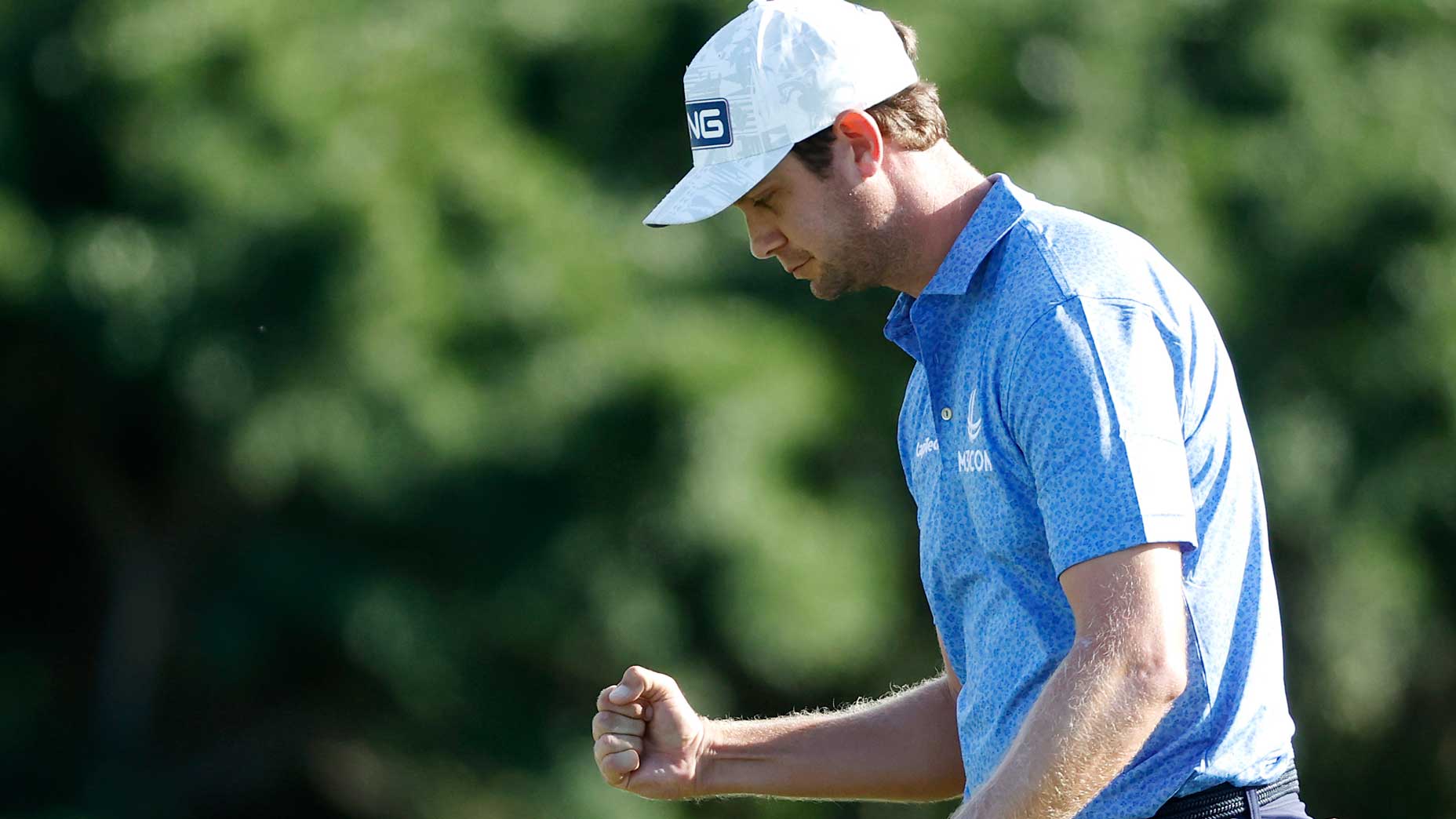2021 is here, and PGA Tour golf is back at it (at one of my favorite places in all of the world – the Hawaiian Islands).
Step aside King Kamehameha, Harris English is the new King of Maui. The lanky, sweet-swinging English strode into the Winner’s Circle at the Tournament of Champions.
His victory was the culmination of lessons learned, hours invested, hurdles overcome and some consistent, and all-round, solid play over recent months.
Harris English is the kind of golfer that your eye is drawn to. The tall frame, the easy manner, the elegant golf swing, he seems to have it all. Beneath all of the visuals, however lies a savvy and calculated campaigner from whom we can learn a lot of lessons that are easy to apply:
1. Attack the Par 5s
Par 5’s are the soft underbelly of the golf course and they are a place where every golfer should play offense.
The good news is you don’t have to drive it a long way to take advantage of the Par 5’s.
In fact last week, at Kapalua, English (who averaged 298 yards off the tee – 18th in the field) scored lower on the Par 5’s than Dustin Johnson (310 yard ave.), Jon Rahm (302 yard ave.) and Bryson DeChambeau (321 yard ave.)
Long off the tee certainly helps, but in my opinion, smart placement of your second shot is a key to maximizing the opportunities the Par 5’s offer.
On my “On the Mark” Podcast, Webb Simpson told me that a key to his scoring improvements has been to attack Par 5’s when merited and play judiciously when required. Simply, his strategy is to go for Par 5s in two, and if he cannot get the ball to the green, he strives to set the ball up in a place that makes the 3rd shot as easy and uncomplicated as possible.
TIP: Get the ball as close to the green with your 2nd shot as possible. If you can’t get there, or there is too much trouble, or you have a bad lie or some extenuating circumstance, try to fit the ball into an area that sets up the easiest 3rd shot.
And remember, the hole isn’t dominated with your tee-shot, it is dissected with the second and the third shots, so think about your next shot, first.
2. Take it all in stride
Harris English has a Southern demeanor about him and it appears like his heart is barely beating. Rest assured however that underneath that unflappable exterior things are going at a rate of knots.
One thing he certainly excels at is how he does not let any shot – good, bad or indifferent – affect the following shot. Next time you watch him play, pay attention to his post-shot responses. You are likely to notice that his reactions are largely consistent, and independent of the shot results.
TIP – As my good friend, Sports Psychologist Dr. Bob Winters, notes, “Have a Vested Indifference to everything that happens on the course (and for that matter off it too).”
Confusing?
Picture Dustin Johnson (and Harris English) and you will see Vested Indifference personified. The result of each shot is completely immaterial to them, and as a result there never seems to be any panic, ever. (See my column on “The Four P’s.)
This is important because, at its core, golf is a marathon and each shot, while it seems important is just one event on the way to the goal. And, the truth of each shot is that its value is determined by the shot that follows it.
So, work on having a purpose-driven intent before and during each shot, but a vested indifference to its result.
Then go ahead and move on to the next one, and the next one… and so on!
Want to *really* improve your scores? Schedule a custom club fitting with the experts at our sister company, True Spec Golf.
